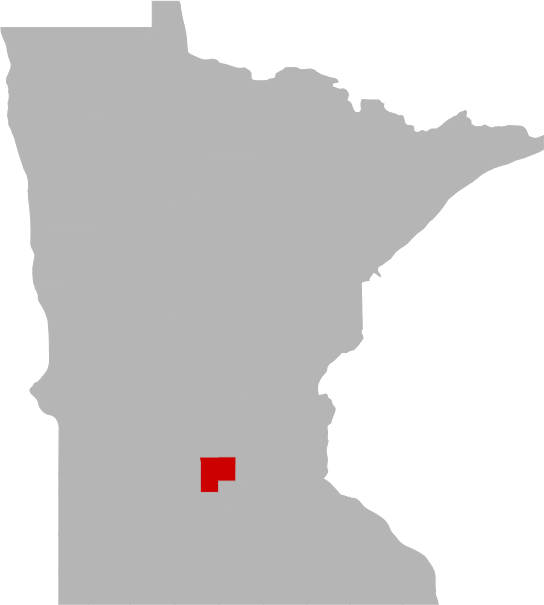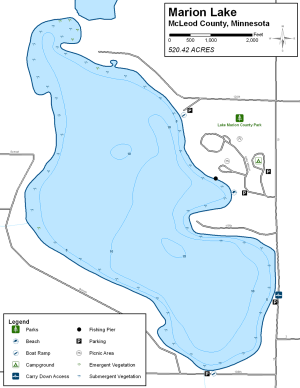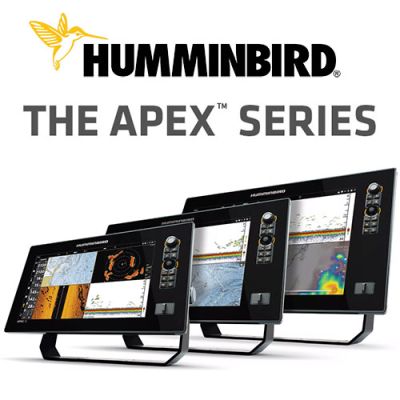Today's Best Fishing Times
Get the best fishing times for Lake Marion with Lake-Link's Fishing Forecast. SEE MORE


Share Your Catch & Win!
Frequently Asked Questions About Lake Marion, MN
- How big is Lake Marion?
- How deep is Lake Marion?
- What kind of fish can you catch in Lake Marion?
- Are there places to stay in the Lake Marion area?
- Are there topographical lake maps available Lake Marion?
- Are there boat launches on Lake Marion?
- Are there places to eat and drink near Lake Marion?
- What is the average air temp for Lake Marion?
How big is Lake Marion?
How deep is Lake Marion?
What kind of fish can you catch in Lake Marion?
Other fish species in the lake include Fathead Minnow, Golden Shiner, Green Sunfish, Hybrid Sunfish, Iowa Darter and White Sucker.
Are there places to stay in the Lake Marion area?
More Lodging Options
Are there topographical lake maps available Lake Marion?
Are there boat launches on Lake Marion?
Are there places to eat and drink near Lake Marion?
History & Status of the Fishery
A standard survey (summer gill netting and trap netting) was conducted on Lake Marion during the week of 8/10/2015, to monitor the fish population. Water clarity was low, with a secchi disc reading of 1.5 feet. The likely cause of the poor water clarity was an algal bloom. Lake Marion dissolved oxygen levels, measured in parts per million (ppm), were moderate with a dissolved oxygen concentration of 6.2 ppm from the surface down to a depth of 10 feet, while bottom oxygen was lower at 4.2 ppm. Lake Marion is primarily managed for walleye, black crappie, and bluegill, but also supports populations of northern pike, largemouth bass, and channel catfish. A fishing pier was available for anglers at the county park on the east side of the lake. A popular shore fishing area, on the southeast side of the lake, was also present. An aeration system is operated at Marion, during the winter, to reduce the frequency and severity of winterkill. Winter anglers should use caution around the posted thin ice and open water area of the lake.
Walleye gill net catches in Lake Marion averaged 6.1/net, which is within the normal range expected for Lake Marion. Of the 43 walleye captured in gill nets, the average size was 17.6 inches with a maximum length of 24 inches. Size structure and condition were good and were at expected levels. Walleye fry are stocked into Lake Marion on a schedule of two out of three years to maintain walleye numbers. Age analysis indicated seven different age classes of walleye, dating back to 2006. All of the year classes present do not correlate to stocked years, suggesting that some natural reproduction may be occurring. Walleye in Lake Marion appear to be sustaining a catchable population with the current stocking regime. Catch rates, size structure, and condition are meeting or exceeding management goals and should provide good angling opportunity for anglers.
Northern Pike gill net catches reached historic lows during 2015 sampling. The catch rate was at or above the normal range between 1992 through 2003. Since 2003, there has been a downward trend in catch rate, and in 2015, only one northern pike was caught in gill nets. Age analysis was conducted on three fish (one from gill netting and two from trap nets). The three fish were all at least five years or older. Limited access to spawning areas and a possible decrease in submergent vegetation abundance and diversity appear to have contributed to the low numbers of pike in Lake Marion. A more in-depth aquatic plant survey is scheduled for 2016.
Black Crappie gill net catches averaged 6.7/net, which is within the normal range expected for Lake Marion. Net catches for Black Crappie have been in the normal range for six of the past seven surveys. Average size of crappie sampled in gill nets was 9 inches, with a maximum length of 10.5 inches. Trap nets also sampled an above average number (10/net) of black crappie which was within the normal range expected for Lake Marion. Crappie caught in trap nets had a similar size structure to those caught in gill nets, with an average size of 9 inches, and a maximum length of 11 inches. Size structure and condition appear to be above average for black crappie. Age analysis revealed five year classes (from age 0 to 4) of black crappie. This information suggests that black crappies are consistently reproducing and growing well in Lake Marion and should provide good angling opportunity in the future.
Bluegill trap net catches averaged 3.7/net, which was below the expected catch rate (10.8/net) for the third consecutive survey. Five consecutive surveys, between 1987and 2000, produced bluegill net catches exceeding the high end of the expected range (29.5/net) for Lake Marion. There has been a noticeable change in the fish community in the previous fifteen years. Six consecutive year classes were present in the 2015 sampling; however, very few fish (< 7) were present in each group. While overall numbers are down, bluegill size structure is up. Average size of bluegill, found in trap nets were 6.5 inches, with a maximum length of 8.2 inches. Although abundance of bluegill is limited, those remaining have desirable size structure and condition. Any efforts to increase bluegill numbers in Lake Marion would likely begin with improving water clarity and aquatic vegetation abundance and diversity.
Largemouth bass, in Lake Marion, were sampled with boat electrofishing in 2015. Prior to 2015, there had been a trend of decreasing catches over the previous five surveys. The 2015 sampling saw an increase in catch rate (13.4/hour) from a record low (7.8/hour) the previous survey. Despite an increase in catch rates, age analysis still revealed concerns with the largemouth bass population. Six year classes were aged, with the oldest being ten years old. However, no bass were sampled below the age of four. Despite low numbers of bass, size structure and condition appeared to be at desirable levels, with an average size of 15.9 inches and maximum length of 20.5 inches. Currently, Lake Marion has a low density but high quality bass fishery.
Yellow perch gill net catches averaged 26.7/net, which exceeded the upper end of the normal range that would be expected for Lake Marion. Yellow perch in Lake Marion are not managed as a primary or secondary management species. Very few times have substantial numbers of yellow perch exceeded eight inches. Due to these factors, yellow perch in Lake Marion are treated as a forage species for other game fish and are not actively managed as part of the sport fishery.
Channel catfish stocking was discontinued in 2008. The two surveys following 2008, showed a decrease in catfish numbers, with two being netted during the 2015 sampling. One of these catfish was 28.8 inches while the other was 18 inches.
Black bullhead net catches reached historic highs in 2015, with a gill net catch rate of 198/net. This rate was over double what would be expected for Lake Marion. The average size of black bullheads, sampled in gill nets, was 9.7 inches with a maximum length of 11.1 inches. During the previous twenty years, black bullhead numbers had been below 9.6/net.
Common carp gill net (2.3/net) and trap net (2.1/net) catches exceeded the average catch rate expected for Lake Marion. Average size of carp captured in gill nets was 14 inches, with a maximum length of 28.4 inches. Trap nets captured carp with an average size of 19.1 inches and maximum length of 27.2 inches.
What is the average air temp for Lake Marion?
More Nearby Lakes To Explore
There's more lake's to explore around Lake Marion...| DISTANCE | ACRES | MAX DEPTH | |
| Otter Lake | 6.8 mi | 642 | 6 ft |
| Preston Lake | 7.6 mi | 655 | 11 ft |
| Round Grove Lake | 7.8 mi | 296 | 7 ft |
| Lake Allie | 8.6 mi | 509 | 12 ft |
| French Lake | 11.0 mi | 42 | 23 ft |
| Swan Lake | 11.1 mi | 352 | 10 ft |
| Lake Hook | 11.5 mi | 330 | 18 ft |
| Stahl's Lake | 11.6 mi | 141 | 37 ft |
| Cedar Lake | 13.3 mi | 1,860 | 8 ft |
| Belle Lake | 13.3 mi | 864 | 25 ft |

















